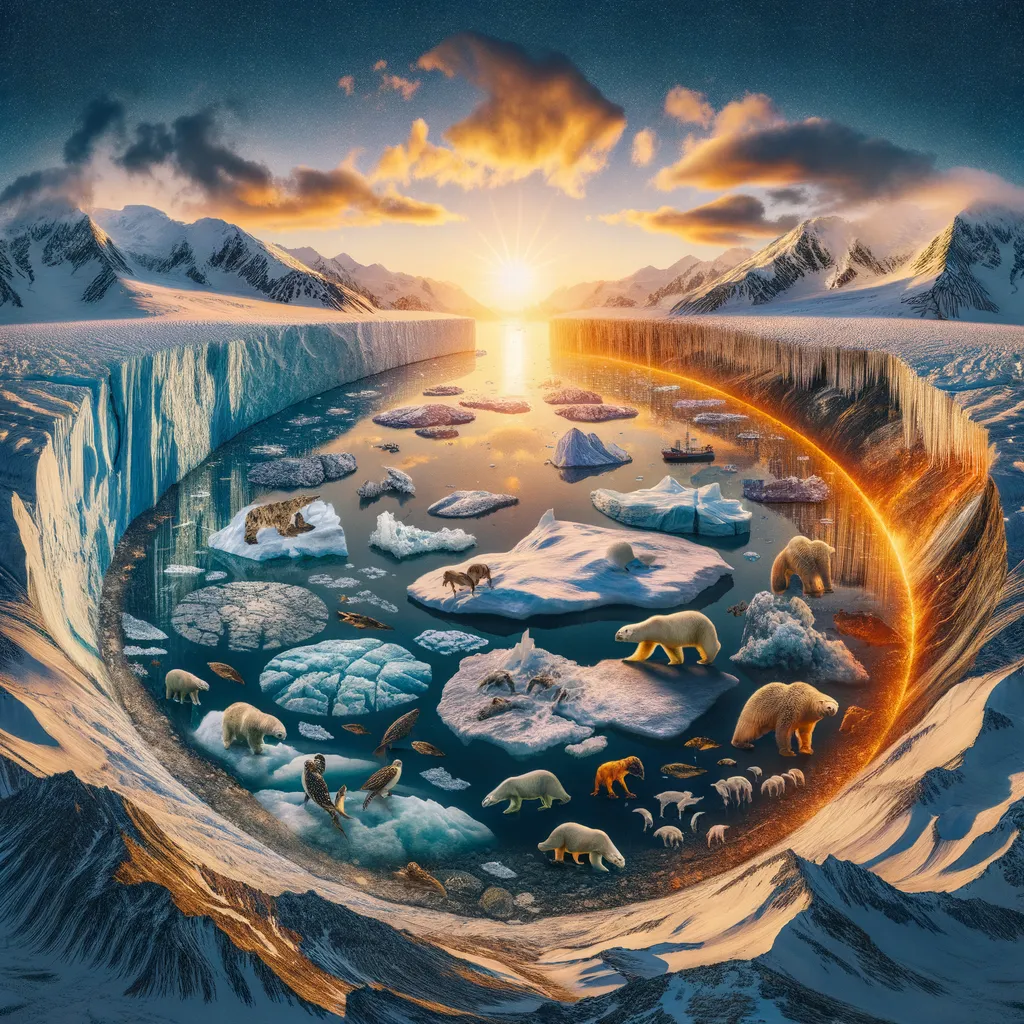Understanding Global Warming and Its Impact on Polar Regions: A Guide for Parents
Welcome, eco-conscious parents! As we journey together through the beautiful yet fragile environments of our planet, it’s essential to turn our attention towards one of the most pressing issues of our time – global warming and its profound effects on the polar regions. Not only is this a matter of utmost importance for the planet’s health, but it’s also a critical conversation piece for our families. Encouraging environmental awareness and conservation starts at home, and by understanding these global phenomena, we can inspire our children to become proactive stewards of the Earth. For those seeking adventure and learning in the great outdoors, visiting Outdoors and Outdoors Info can provide insightful resources to enhance your outdoor experiences with a conservation mindset.
The planet’s polar regions, the Arctic in the north and the Antarctic in the south, are experiencing drastic changes due to global warming. These changes not only affect the native wildlife and indigenous communities but also have a cascading effect on global climate patterns. This guide aims to shed light on the science behind global warming, its direct impact on the polar ice caps, and the consequential effects on global ecosystems. By educating ourselves and our children, we can take meaningful steps towards mitigating these changes for future generations.
The Science Behind Global Warming
At its core, global warming is caused by the increase in greenhouse gases such as carbon dioxide, methane, and nitrous oxide in the Earth’s atmosphere. These gases trap heat from the sun, leading to a gradual increase in the planet’s average temperature. Human activities, such as burning fossil fuels, deforestation, and industrial processes, have significantly accelerated the accumulation of these gases, exacerbating the natural greenhouse effect and leading to what we now refer to as climate change.
Effects of Global Warming on the Polar Regions
The polar regions are among the most sensitive and rapidly changing environments on Earth due to global warming. The most conspicuous indicator of this warming is the accelerated melting of polar ice caps and glaciers. This phenomenon not only contributes to rising sea levels but also affects the salinity and temperature of the oceans, altering marine ecosystems and global weather patterns. Moreover, the diminishing ice caps lead to a loss of habitat for iconic polar species such as polar bears, penguins, and seals, pushing them towards the brink of extinction.
The loss of sea ice also affects indigenous communities who depend on these ecosystems for their traditional ways of life, including hunting and fishing. The changing landscapes force these communities to adapt to a rapidly changing environment, threatening their cultural heritage and livelihoods.
Responding to the Challenge
Addressing global warming and its effects on the polar regions is a monumental challenge that requires collective action from individuals, communities, governments, and organizations worldwide. As parents and guardians of the next generation, we play a crucial role in this effort. By fostering an environment of awareness and action at home, we can empower our children to make informed decisions and contribute to conservation efforts in meaningful ways.
It starts with simple daily actions and conversations about the importance of reducing our carbon footprint, conserving energy and water, and protecting natural habitats. Additionally, supporting policies and initiatives aimed at combating climate change and preserving the polar regions is essential. We must lead by example, showing our children that every effort counts and that together, we can make a difference.
Continued learning and exploration are vital. Visiting educational websites, museums, and engaging with outdoor activities can provide enriching experiences that further instill the values of conservation and responsibility towards our planet. Resources available at Outdoors and Outdoors Info offer ample opportunities for families to connect with nature and learn more about preserving our beautiful world.
As we delve deeper into the subject of global warming and its effects on polar regions, it’s clear that the journey towards sustainability is a collective one. By educating ourselves and nurturing environmental stewardship in our children, we contribute to a more sustainable and hopeful future for all. The health of our planet’s polar regions is a stark reminder of the urgency with which we must act, yet it also presents an opportunity to unite and forge a path towards positive change. Let’s embrace this challenge together and inspire our children to be the changemakers

5 Essential Insights for Parents on Environmental Awareness and Conservation: Global Warming’s Impact on Polar Regions
Welcome, guardians of the future! As we strive to nurture responsible and environmentally conscious children, understanding the impact of global warming on polar regions becomes crucial. This guide is designed to offer parents valuable insights into environmental conservation, emphasizing the changes occurring in the Arctic and Antarctic. By instilling a sense of responsibility towards our planet at an early age, we can empower our children to take actionable steps towards a sustainable future. For enriching outdoor experiences that complement your environmental education efforts, exploring resources at Outdoors and Outdoors Info will enhance your family’s understanding and appreciation of nature.
1. Grasping the Basics of Global Warming
Start by explaining the science behind global warming in an accessible manner. Simplify the concept of greenhouse gases and how activities like burning fossil fuels and deforestation contribute to the planet’s rising temperatures. This foundational knowledge is essential for young minds to understand why conservation efforts are critical, especially for the polar regions that are drastically affected by these changes.
2. Recognizing the Impact on Polar Regions
Discuss the specific consequences of global warming on the Arctic and Antarctic, such as the accelerated melting of ice caps and glaciers. Highlight how this not only leads to rising sea levels but also disrupts marine ecosystems and global weather patterns. Make it relatable by mentioning the species at risk, like polar bears and penguins, to help children grasp the tangible effects of environmental neglect.
3. Everyday Actions to Mitigate Impact
Engage your children in conversations about how everyday choices can make a difference. Discuss simple actions such as recycling, conserving water, and reducing electricity use. Emphasize the power of individual actions in contributing to a larger change, fostering a proactive mindset towards environmental conservation from an early age.
4. Advocacy and Community Engagement
Encourage your family to be vocal about environmental issues. Support initiatives and policies aimed at curbing climate change and preserving natural habitats. Participate in community clean-ups or conservation projects, showing your children the importance of collective action and community involvement in tackling global challenges.
5. Continuous Learning and Exploration
Instill a love for nature and a passion for learning by incorporating educational outings and resources into your family life. Visits to museums, nature reserves, and engaging with online educational content can offer insightful perspectives on conservation. Use the resources available at Outdoors and Outdoors Info as gateways to exploring the natural world and understanding the importance of preserving it.
As parents, introducing our children to the realities of global warming and its effects on the polar regions is a step towards a more informed and engaged future generation. By incorporating these five key insights into our parenting approach, we can foster an environment of awareness, responsibility, and proactive conservation. Let this guide serve as a starting point for inspiring your family to join the collective effort in preserving our planet for future generations. Together, we can ignite a passion for environmental stewardship in our children, paving the way for a more sustainable world.
Disclaimer
The articles available via our website provide general information only and we strongly urge readers to exercise caution and conduct their own thorough research and fact-checking. The information presented should not be taken as absolute truth, and, to the maximum extent permitted by law, we will not be held liable for any inaccuracies or errors in the content. It is essential for individuals to independently verify and validate the information before making any decisions or taking any actions based on the articles.




